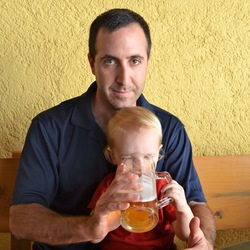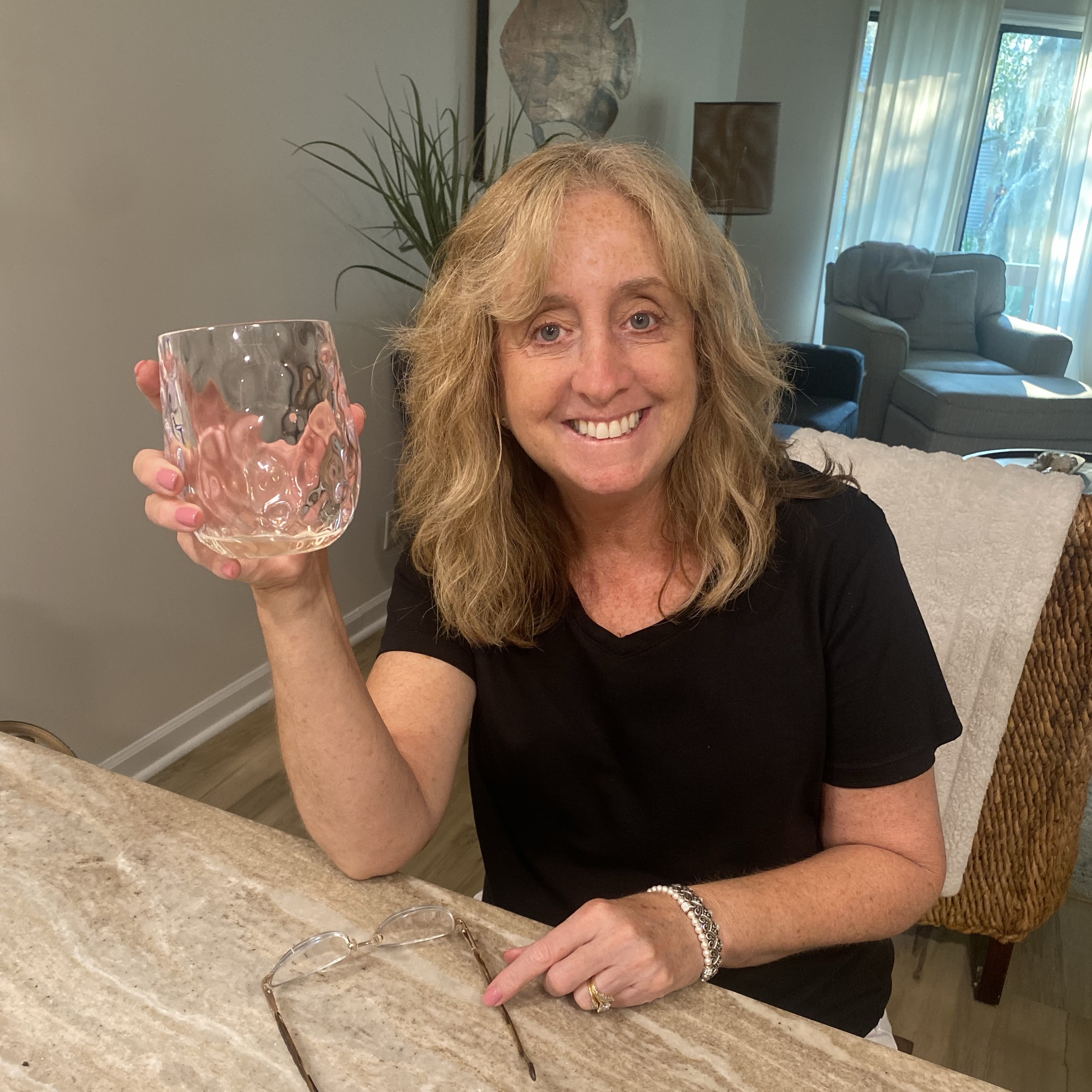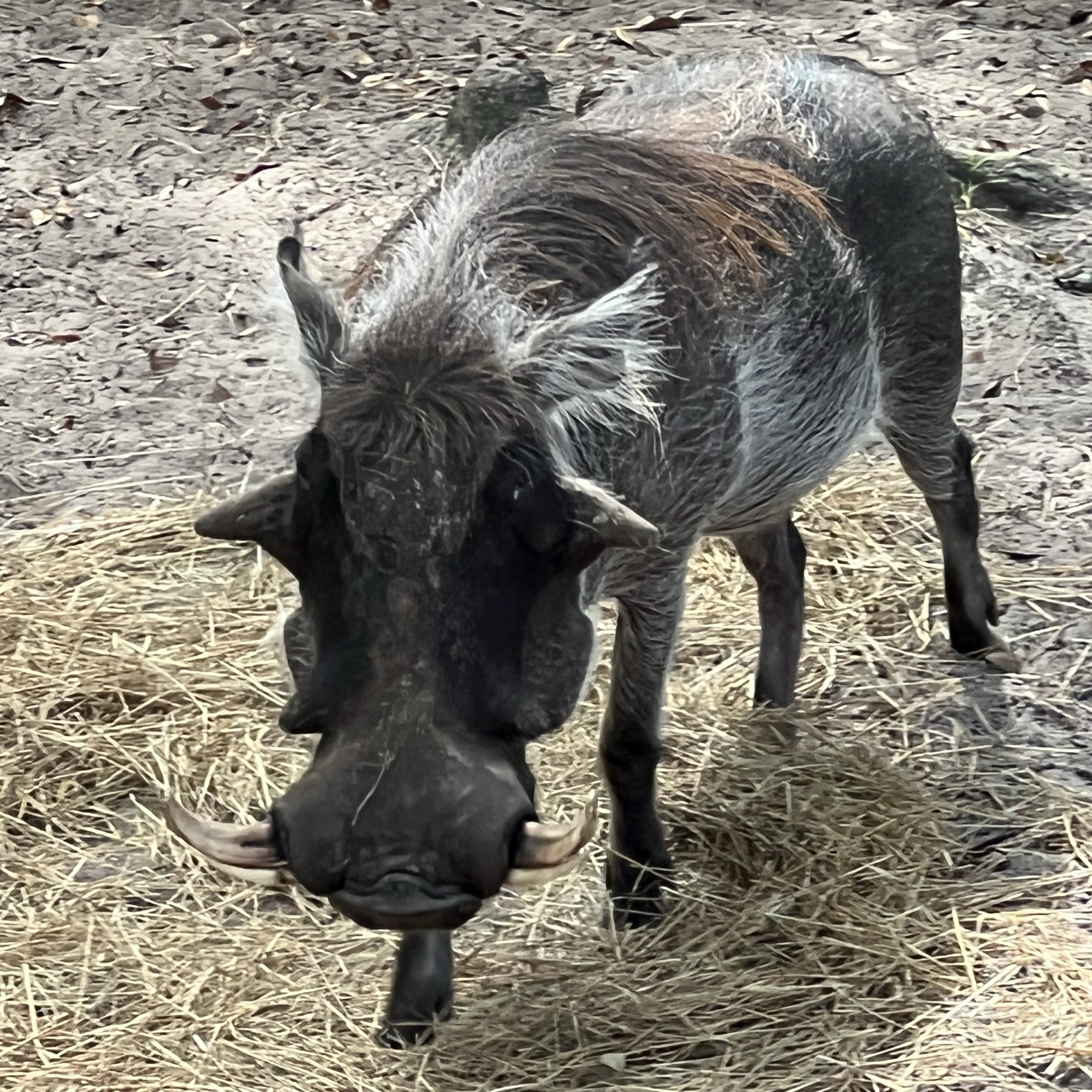Two Twisted Posts
Signori
Napa Valley Cabernet Sauvignon 2019

Arcanum
Toscana Red Blend 2010
60% Cabernet Franc, 25% Merlot & 15% Cabernet Sauvignon
Nose has spring rose, rain moistened red raspberry, black currant and fresh sage.
Palate has lightly tannic blackberry, wet leather, ripe black currant, cigar box, wet clay and tarry black cherry.
Paired with a long cooked Bolognese sauce over fettuccine. Decanted ~3hr, more time in the decanter would benefit. Future bottles can be 2022+
Happy Father's Day 2019 to all. Today I'm posting pictures of our kids, yes they are all furry, independent and somewhat self-interested. Two boys (8) and two girls (2), sisters, all rescued. They generally bring the utmost of joy to my life on a daily basis. It has been a rainy and relaxing day here, everyone is loving the slow pace of life today.
I think that Delectable needs to be able to tag cat+wine posts so that I can make a bookmark for felines. — 6 years ago

Dirty & Rowdy
Unfamiliar Mourvedre 2017
Via Brooklyn Wine Exchange: Hardy Wallace is a bit of a superstar in the "New California" wine scene. He began his wine career in Atlanta, publishing a blog on the subject called Dirty South Wines. In 2009, he won a high-profile contest held by Murphy-Goode Winery in Sonoma, called "A Really Goode Job." Hardy beat out 2,000 other applicants for this stunt-job, acting as a sort of social media/pr coordinator for the winery. Upon completion of his six-month contract, he went to work for several legendary winemakers in the valley, including Cathy Corison (Chappellet, Corison) and Ehren Jordan (Turley, Failla). During this time, Hardy and his wife Kate also partnered with friends Matt and Amy Richardson to form a small label called Dirty & Rowdy Family Winery. For their first vintage, they purchased one ton of Mourvredre, the semi-obscure Provencal and Spanish variety that is rarely seen outside the context of a red blend in California.
Knowing that Dirty & Rowdy could distinguish itself in a ocean of Napa Valley Cabernet Sauvigon with this curious and brawny grape, Hardy & Co. quickly bet the farm on Mourvedre, as a vehicle to express different styles of winemaking as well as the terroir of multiple regions within California. Flash-forward to current day, where Dirty & Rowdy has become the king of California Mourvedre, bottling multiple cuvees each year that sell out almost immediately.
Dirty & Rowdy is a well-known emblem of the domestic natural wine scene as well. Hardy buys almost exclusively from organic growers, and doesn't filter, acidify, or alter his wines in anyway. Sulfur use is extremely low, and the overall philosophy is to be as hands-off as possible.
That is until 2017. The fact that Dirty & Rowdy has a wine to present at all for this vintage is a miracle. Flashback to mid-July last year. The growing season wasn't going all that well. Tremendous heat spikes created growth problems at almost all the vineyards Hardy sources grapes from. It's hard enough to monitor vine issues on one vineyard, let alone almost a dozen parcles scattered around six counties stretching from the Central Coast all the way out to the Sierra Foothills. A case of shingles went from bad to worse, spreading to his eyes. Hardy completely lost his vision for three days. Kate's brother Angus, a ski instructor and artist from Aspen, drove out to lend a hand with the impending harvest. On his way out, he was involved in single-car crash along a treacherous stretch of interstate and tragically lost his life.
Then the fires started.
Hardy and Kate, like many other producers who make wines in communal "crush" facilities located in urban areas around Sonoma and Napa, had hoped to ride out the fires and continue their wine production. The fires spread rapidly and threatened both their house and their winery, located in Petaluma. They left their wine in the midst of alcoholic fermentation, one of the most crucial and stressful times of the year for a winemaker even in the best of situations. When they were able to return eight days later, the winery was luckily undamaged. The wine, however, didn't fare so well. most vats had experienced "stuck fermentation," meaning that the native yeast died before eating all the sugar. Hardy, like most forward-thinking American winemakers, is a firm believer in natural fermentation. This no-brainer aspect to his wine was now an virtual impossibility. Plus, the vats contained high levels of volatile acidity or "VA," which creates an unfavorable "nail polish" quality in wine. A little bit of VA can give lift and energy to wine. Too much, however, renders the wine undrinkable.
At this point, Hardy thought to sell all the wine off in bulk for pennies on the dollar. Or perhaps create a second label to distance himself from what was surely going to be an atypical wine. Instead, he decided to combine almost every vat of his Mourvedre for the vintage (including lots of his most expensive fruit), and go into the "Unfamliar" territory of interventionist winemaker. Stuck lots were restarted using a variety of methods. When the wines finally fermented to dryness, he borrowed a "reverse osmosis" filtration system, perhaps the most modern of all the modern wine doohickeys. This contraption allowed Hardy to literally suck out the volatile acidity to bring it down to a pleasing level, as well as moderate and stabilize the alcohol. Then he filtered the wine. Basically, he did all the things he never thought he would ever want to do to wine.
The resulting wine is something that we have never seen before, both from Dirty & Rowdy and the Mourvedre grape, in general. Much of the wine fermented carbonically in tank, so the expression is much closer in style to Beaujolais than Bandol. It is so light on its feet, in fact, that Hardy believes this wine could take a serious chill. (Hence the reason we are trying to get you to try a California Mourvedre in the middle of a sweltering summer!) The tannins are pretty much non-existent, and the fruit is pretty and pure. There is a lovely little purple flower note in the middle of the wine, and a hint of smokiness on the finish (smoke taint from the fires? Or is this just some sort of phantom association because of the context? Either way, it adds depth and personality to this gorgeous wine.)
Since their "Annus Horribilis" of 2017, order and peace has been restored in Hardy & Kate's life. Their daughter Maple turns two in a few days. They celebrated the free-spirited life of their brother with scores of his friends and ski students at Aspen Mountain's opening day last November. The motto of the celebration, "Live Like Angus," has inspired hundreds and hundreds of beautiful social media posts. And this year's Spring release of Dirty & Rowdy wines from earlier vintages has quickly sold out around the country, gobbled up by ravenous collectors, restaurants, and retailers (like this one.)
But to Hardy, this "Unfamiliar" wine, which doesn't fit stylistically or financially into the rest of the D&R portfolio, will always represent something completely different: The best of a unthinkably bad situation. "It took a lot of blood, sweat, and tears to get that wine into bottle," Hardy wrote to us, just this morning. "Fortunately, it is fresh, delicious, soulful and somewhat of a Phoenix Rising from 2017. Though it is our least expensive wine ever, it is the wine I am most proud of." — 7 years ago
Far Niente Winery
Napa Valley Cabernet Sauvignon 2021
This is a producer I have not had for a while. Sofia and I have attended a couple dinners there in the past. They prepared nice menus and created an even nicer presentation in their cellar.
I bought this because I hadn’t had it in a longtime. Also, I do like 21 vintage quite a lot. It was smartly priced enough to bring back some memories and check on their current craft.
Hour and half decent before detailing my notes.
The nose has beautiful ruby, candied lavender & violets. It does show a bit of hot alcohol. Probably flushes out in time. Dark currants, ruby; blackberries, black raspberries, boysenberries, both plums, dark cherries, raspberries and just a whiff of blueberries. Dark chocolate, cedar, fresh & dry tobacco, anise that runs into black licorice with some mid berry cola that wraps it, clove, nutmeg, ground cinnamon to stick, soft vanillin, sweet, dark turned earth with fresh, slightly candied, dark, red flowers wrapped in lavender & violets.
The palate presents a slight alcoholic tongue burn. The M-M+ tannins are round and fairly soft at this stage. The fruits are beautifully ripe; dark currants, ruby; blackberries, black raspberries, boysenberries, both plums, dark cherries, raspberries and just a hint of blueberries. It’s kind of lean and not very complex. Especially, for a 21. Dry cedar & dark spices w/ heat burro into your tongue. Dark chocolate, fresh tobacco, anise that runs into black licorice with some mid berry cola, delicate clove, nutmeg, ground cinnamon to stick, soft vanillin, sweet, dark turned earth, w/ slightly dry leaves, dry crushed rocks/limestone, grey volcanic minerals, dry river-stones with fresh, slightly candied, dark, red flowers wrapped in liquid lavender & violets, beautiful acidity with an elegant, ripe, well balanced, softly tensioned finish that lasts a minute falling onto nice, dry earth, spice with bright fruit overtones.
While you should let this one better integrate for another 3 years or so, I don’t think this bottling is a long cellar vintage for them. Thinking it has a window of another 10-15 years. Maybe, 1 or 2 more w/ excellent storage. Likely will add a point w/ the right age.
A decent Napa Cabernet, but underwhelms given the vintage and other 21 offerings I’ve had from Napa producers.
14.5% ABV seems 15.5% at this point.
I’m sure many of you have noticed the wrong grape varietals on the wrong tabs for some time now. Have you noticed that Delectable hasn’t published new weekly tasting notes for two weeks? Is there anyone still working for the app? Will anyone still be able to read our posts tomorrow or the next days going forward? 🤔 Good thing I have been double posting on CellarTracker for awhile now. — 7 months ago

Ovid
Experiment N1.4 Cabernet Sauvignon Cabernet Franc 2014
Last of the weekend Ovids and exactly what I was referring to in other posts. The Experiment reds are generally fantastic. Bold and rich and unique. @Matt Duncan these last two wines are what makes Ovid special. — 5 years ago

Two Hands
Bella's Garden Barossa Valley Shiraz 2004
Yes, we also collect Australian wine (Two Hands & Penfolds)...but they need many, many, many years so my posts are justifiably far between. Been aggressive on Two Hands from 2002 forward, great stuff, requires patience. WS indicated a 2020 peak, I disagree, likely 2022+ is more reasonable for the top end. We miss the days of paying $48 for these bottles.
Nose has intensely focused black cherry & pomegranate compote, mashed red raspberry and a cedar bat which Big Papi has full swing crushed you in your mouth enough times to know that 'it's there'.
Palate has a tawny note of raspberry port, plum & blueberry juice, cedar notes are fading but balanced, tannins are resolved and this wine is drinking near perfection. Amazinly long finish.
Still some heat of alchol on the nose letting you know it's still going to kick you in the hind quarters at some point (15% ABV). — 7 years ago

Mt. Brave
Mt. Veeder Cabernet Sauvignon 2018
Many of you that see my posts know I don’t open a Napa Cabernet this young. However, this was selling at my Costco for $69.99. K&L Wine Merchants $99.99. Delectable at $115. So, I had to buy a four. I coravined this bottle for a Somm friend last weekend who likes his Napa reds young. 🤷♂️
While this has seen a bit of bottle evolution, it still needs another 6-8 yrs before I open another and has the potential to pick up another point or two then.
Nose shows; brambly blackberries, stewy black plum, black raspberries, darkest cherries, boysenberries and strawberries off the glass edges. Dry tobacco, leather, dark spice, clove, nutmeg, cinnamon notes, vanilla, anise, dark, rich, turned earth and withering, dark, slightly candied flowers.
The palate expresses some evolution. It is rich, ripe; brambly blackberries, stewy black plum, black raspberries, darkest cherries, boysenberries, hints of blueberries and strawberries off the glass edges. Tarry, dry medium plus tannins. Dry tobacco, leather, dark spice with a touch of heat, mixed darker berry cola, clove, nutmeg, cinnamon notes, vanilla, black tea, anise, mixed fresh & drier herbs, dark, rich, turned earth, barrel shavings/dust, a hint of black pepper, moist, grey clay, dry top soil, dry river stone and withering, dark, red, slightly candied flowers with violets, very round, phat acidity with a well; balanced, big structured, tensioned, lush, elegant and nicely layered & polished finish that lasts a full 90 seconds. Still kind of in its primary stage.
This is made by Chris Carpenter who also makes; Lokoya, Cardinale, La Jota, Hickinbotham (Australia) made at Yangarra. Sofia & I tasted at Yangarra and after tasted his Hickinbotham with him in 2017.
Photos of; staff picking on Mount Veeder, Chris Carpenter in the cellar and scenic shot of Mount Veeder. — 2 years ago
Two Twisted Posts
Virginia Petit Verdot
Delicious, tart and not so dry — 4 years ago
Ruinart
Brut Rosé Champagne
If you see my posts, you know all too well that I am addicted to Rosé Champange. Also, I love to pair food & wine.
Everyone has a passion and or gift(s). One of the other things I do well is make the best fruit tart I’ve had anywhere. I’m not bragging, just relaying something that has played out through my experiences. I make it twice a summer season and have been waiting to pair with the Ruinart Rosé this season. I simply knew these two would be perfect together and it didn’t disappoint. Even over the Billecart Rosé which, on its own, I enjoy more over the Ruinart Rosé.
The fruits in each marry perfectly. The crust of the tart picked up and extenuated the dough/baguette crust in the Champagne. There is a perfectly even tug of war between the dessert and the Champagne which, is the primary essential building block of any good food & wine pairing. The wine and dish should not dominate one over the other. The flavors of each should complement each other in some fashion and there are normally many paths to choose from in getting there. This happened perfectly tonight with this Cuvée and my tart.
The Ruinart shows rich, deep and ripe fruits. Black cherry, strawberries, citrus blend, raspberries, soft, delicate chalkiness, mid intensity volcanic minerals, bread dough/Baguette crust, excellent acidity and beautifully, delicious, rich, elegant polished finish that persists minutes. 9.2 on its own and 9.4 with the fruit tart.
Photos of; the House of Ruinart, famous painting of Ruinart’s founder-Dom Thierry Ruinart, my fruit tart and the walk down to their chalky caves. So chalky, its seeped through the bricks they laid to support the ceiling and walls. — 6 years ago








Somm David T
Independent Sommelier/Wine Educator
94 now. 94-96 in 5-8 yrs.
I have a soft spot for a Napa producer that was completely burned to the ground in 2017. Thankfully, structurally recovered now. Financially recovered? I’m sure they were insured but who knows given the over saturated wine market these days.
This bottling/cuvée comes from the estate vines that face preferably east & behind the property that I thought burned in the fires but maybe it was just its fridges.
This cuvée sells at two online resellers today for $115 and $150 respectively. $150 at the winery. I saw this at my Costco this week for $49.99 with an instant coupon. So, I bought 3. I’ll go back and buy at least 3 more tomorrow.
The nose & palate are harmonious & in sync. I do not remember experiencing a nose with such lush/rich fruits and bold cinnamon stick, but I normally only taste Cabernet this young, not coravined or opened. This drinks exceptionally young now but better things lie ahead in 6-10 yrs. Those of you that read my posts know I prefer well aged Cabernets. It is rare when I find a young Cabernet like this so delicious this young.
The nose is expressive & expansive. Leads with cinnamon stick, dark currants/cassis, blackberries, black raspberries, black plum, dark cherries, strawberries, fruit cake, nuts, anise to licorice, mixed dark berry cola, dark chocolate, caramel, baking spices-light clove/nutmeg, allspice, vanilla, dry top soils, very light & soft savory herbaceous notes, notes of white pepper, limestone, dry crushed rocks, candied red, dark, flowers, red roses & violets.
The palate is beautiful, rich & lush with soft, rounded, velvety but dry, powdery M+ tannins. Gorgeous. Dark currants/cassis, blackberries, black raspberries, black plum, dark cherries, strawberries, raspberries as it sets, fruit cake, nuts, anise to licorice, charcoal, volcanic ash, graphite, dry tobacco w/ ash, nice used leather, light cedar, mixed dark berry cola, mix of Asian & Indian spices, steeped fruit tea, dark chocolate to chocolate pudding, milk chocolate, malt balls, caramel, baking spices-light clove/nutmeg, allspice, vanilla, cocoa powder, dry top soils, tree bark w/ sap, very light & soft savory herbaceous notes, notes of white pepper, lightly grilled meats, limestone, dry crushed rocks, candied red, dark, flowers, red roses & violets, excellent round acidity with a well tensioned/structured, very balanced at this young age, lush & elegant, polished finish that last nearly two-minutes and lands on beautiful spice & earthiness.
Every bit a $125-$150 Napa Cabernet & one of the very best Napa Cabernets values I have purchased at $49.99. — 4 months ago